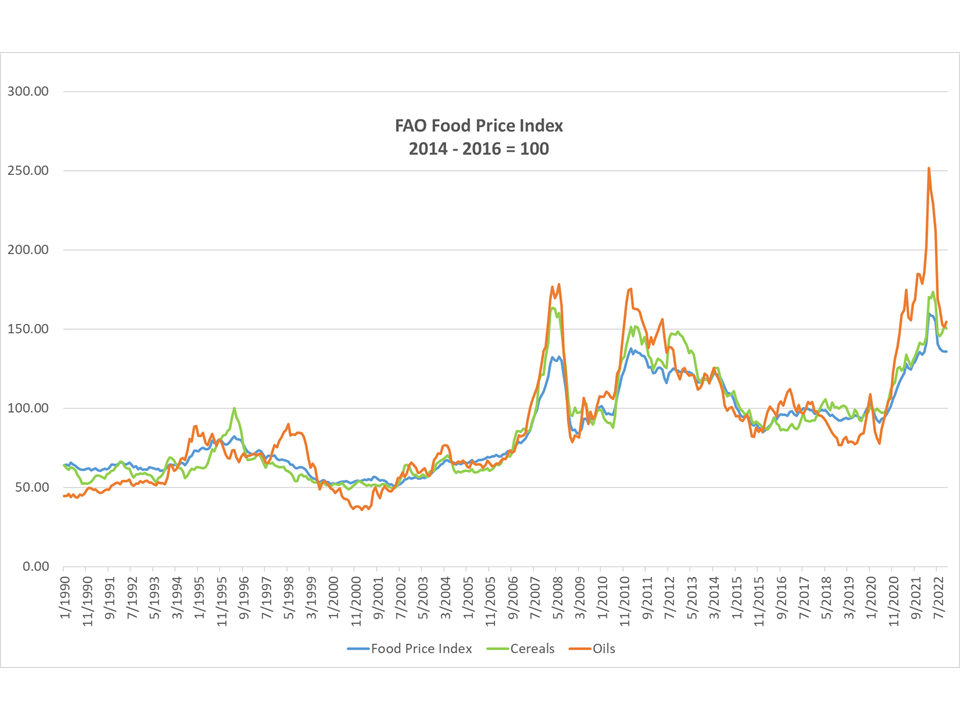Pick Up
679. November 2022 World Food Price Index

The UN Food and Agriculture Organization (FAO) released its World Food Index in early December, showing an average of 135.7 points in November 2022, with most sub-indices showing a monthly decline except for vegetable oil and sugar, offsetting price increases in vegetable oils and sugar and little change overall. This was only 0.3% higher than a year earlier in November 2021.
Cereal prices were at 150.4 points in November, which is 1.9 points (1.3%) lower than in October but 9.0 points (6.3%) higher than in October of last year. International wheat prices fell 2.8% in November, partly due to Russia's return to the Black Sea Grain Initiative and the extension of the agreement. International maize prices also fell 1.7% following the extension of the Black Sea Initiative. International rice prices rose 2.3%, reflecting the appreciation of the currencies of Asian exporting countries against the US dollar and good buying interest.
Vegetable oil prices, which had been on a downtrend for several consecutive months through October, rose 3.4 points (2.3%) from the previous month to 154.7 points in November. This was due to higher international palm and soybean oil prices, which offset lower quoted prices for rapeseed and sunflower oils. The rise in palm oil prices in November was due to increased demand resulting from competitive price levels relative to other edible oils, as well as the prospect of lower production following heavy rains in some Southeast Asian producers. The rise in soybean oil reflected robust demand in the biodiesel sector in the US. In contrast, international sunflower oil prices fell following the extension of the Black Sea Grain Initiative.
While international prices have thus calmed compared to a brief period, domestic food price inflation has been reported globally. According to the World Bank's Food Security Update dated December 1, 84.2% of low-income countries, 93% of lower-middle-income countries, and 93% of upper-middle-income countries reported high inflation exceeding 5% with many cases exceeding double digits between July and October 2022. High-income countries also suffered high inflation in 85.5% of the cases. In real terms, food price inflation exceeded overall consumption price inflation in 89.6% of the 163 countries for which data were available.
These trends are worrisome as they continue to threaten the food security of vulnerable segments of society.
Contributor: IIYAMA Miyuki (Information Program)
